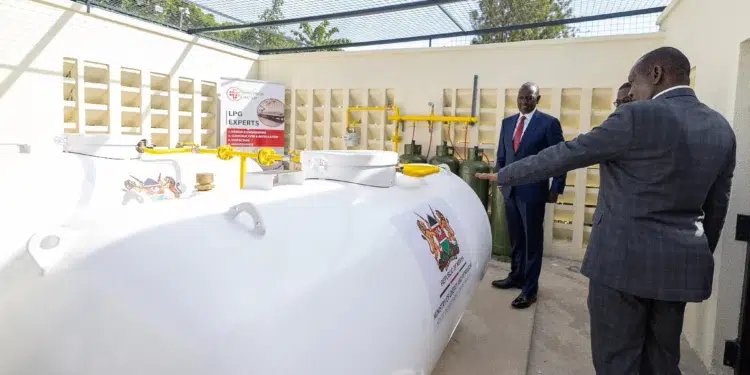- The government of Kenya is shifting to LPG in high schools for environmental sustainability.
- At least 20 high schools and higher institutions have been earmarked for the LGP pilot program.
- Kenya aims to acquire fully renewable energy status by 20230.
The government has launched an initiative aimed at ensuring that all public schools transition to liquefied petroleum gas as an efficient alternative to using logs in meal preparations. The government is moving towards a fully green energy realization by 2030.
Kenya is currently generating 80–90% of its electricity from renewable energy sources, including geothermal, hydro, wind, and solar power. Kenya is one of the leading countries in Africa for geothermal power, with the Olakaria Geothermal Complex, located in Hell’s Gate National Park, being the largest.
Using renewable energy has significantly reduced Kenya’s reliance on fossil fuels. However, LPG is a fossil fuel, which primarily consists of propane, butane, or a mixture of both, which are hydrocarbons derived from the natural gas processing and crude oil refining.
Kenya introduced a national tree planting day, aimed at achieving 15 billion trees by 2032, to combat global warming. Consequentially, Kenya is trading carbon credits with the international partners to generate revenue for further sustainable development and to gain support for renewable energy advancement.
The president of Kenya, William Ruto, launched an energy transition drive in Nairobi, expected to roll down to the upcountry high schools, that relies much on wood as a fuel. Through the Ministry of Energy docket, piping and delivery of LGP tanks are expected to be kicked off in tens of schools.
President Ruto announced that all 11,000 public boarding schools and higher learning institutions in Kenya will benefit from the LPG program in the next year. This is not only to provide efficiency and improve the health of students, teachers, and kitchen staff, but is also expected to promote environmental sustainability by reducing the falling of trees for cooking purposes.
“The children of Kenya in our 11,000 boarding schools, TVETs, and other institutions now know that in the next year, they will have gas delivered in schools,” the head of state announced during the launch on December 16th, 2024, at the Jamhuri High School, Nairobi.
“We cannot be looking at achieving that goal when we are cutting trees for firewood use at our homes and schools.”
The president also asserted that the project will be financed by the private sector, expected to sell and install LPG tanks in schools and other facilities.
“This project is going to be financed by the private sector. As we buy gas from them, they will be required to install all the LPG tanks in our schools and other facilities.”
At least 20 public schools are earmarked for the pilot program, including Muranga High School, Shimo la Tewa High School, Jamhuri High School, Isiolo Girls High School, St. Georges Girls Eldoret, Ogande Girls High School, and Thika High School for the Blind.
Others include Garissa High School, Kipsonoi High School, Karatina Girls, and Bahari Girls High School. Immaculate Heart of Mary Luuya Girls School, Eor Ekule Seconday School, Machakos Technical Institute for the Blind, St. Paul’s Igonga School, Chavakali Boys High School, Chogoria Boys High School, Our Lady of Fatima Secondary School, Siala Technical Training Institute, and the Kenya National Polytechnic-Kwale Campus.






